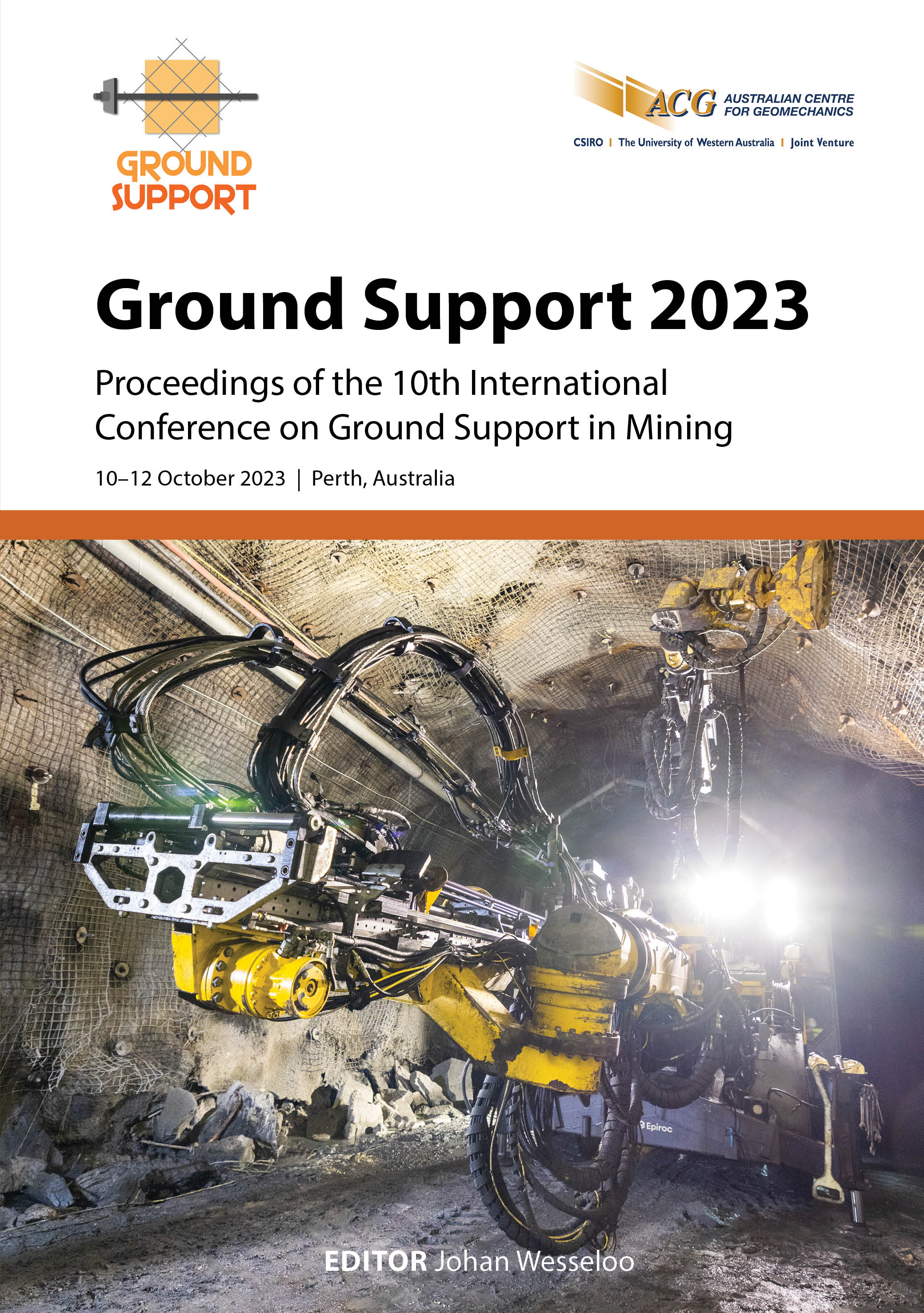Evolution of ground support designs for blasthole stoping in kimberlite at Diavik Diamond Mine

|
Authors: Burns, JM |
DOI https://doi.org/10.36487/ACG_repo/2325_38
Cite As:
Burns, JM 2023, 'Evolution of ground support designs for blasthole stoping in kimberlite at Diavik Diamond Mine', in J Wesseloo (ed.), Ground Support 2023: Proceedings of the 10th International Conference on Ground Support in Mining, Australian Centre for Geomechanics, Perth, pp. 557-572, https://doi.org/10.36487/ACG_repo/2325_38
Abstract:
Diavik Diamond Mine has used blasthole stoping (BHS) for the extraction of ore from the A154N orebody since 2010. As the only diamond mine globally to use this mining method for kimberlite extraction, there are several unique challenges that Diavik had to overcome with regards to ground support. Geotechnical variability of the kimberlite, mine sequencing, stope sizing and production output requirements have led to the development of a variety of ground support designs to overcome these challenges. A change from a vertical walled, rectangular stoping geometry to a geometry requiring partial undercutting of the stope crown led to a transformation in the overcut ground support requirements. New support elements including, pre-tensioned cable bolts and resin rebar, have been integrated into the designs to account for the change in stope geometry. Concurrently, higher-capacity inflatable friction bolt support has been required to account for the geotechnical variability of the kimberlite and the transition from primary stoping to secondary stoping. This paper describes the various ground support designs at Diavik Diamond Mine used for BHS in kimberlite and how these designs have evolved over the life of the mine in response to changing ground conditions and production requirements.
Keywords: open stoping, ground support, cable bolts, kimberlite, blasthole stoping
References:
Archibald, A 2023, ‘Application of geotechnical numerical modelling to aid in operational decision making’, Proceedings of MTL 2023, Canadian Institute of Mining, Metallurgy and Petroleum, Westmount.
Grimstad, E & Barton, N 1993, ‘Updating the Q-system for NMT’, in R Kompen, OA Opsahl & KR Berg (eds), Proceedings of the International Symposium on Sprayed Concrete – Modern Use of Wet Mix Sprayed Concrete for Underground, Norwegian Concrete Association, Oslo, pp. 46–66.
Hoek, E, Kaiser, PK & Bowden, WF 2000, Support of Underground Excavations in Hard Rock, 1st edn, CRC Press, London.
Hutchinson, DJ & Diederichs, MS 1996, Cable Bolting in Underground Mines, BiTech Publishers Ltd, Richmond
Jakubec, J 2020, ‘Mining for diamonds – history and present’, paper presented at MassMin2020, Santiago, 9–11 December 2020.
Lewis, PA, Auld, CP & Karami, A 2017, ‘A comprehensive approach to geotechnical instability management in an open stoping mining block’, paper presented at CIM Convention 2017, Montreal.
Lewis, PA, Clark, LM, Rowles, SJ, Auld, CP, Petryshen, CM & Elderkin, AP 2018, ‘Sublevel retreat mining in the subarctic: a case study of the Diavik Diamond Mine’, in Y Potvin & J Jakubec (eds), Caving 2018: Proceedings of the Fourth International Symposium on Block and Sublevel Caving, Australian Centre for Geomechanics, Perth, pp. 57–72
1815_02_Lewis
Wyllie, DC & Mah, CW 2004, Rock Slope Engineering, 4th edn, CRC Press, London.
© Copyright 2025, Australian Centre for Geomechanics (ACG), The University of Western Australia. All rights reserved.
View copyright/legal information
Please direct any queries or error reports to repository-acg@uwa.edu.au
View copyright/legal information
Please direct any queries or error reports to repository-acg@uwa.edu.au
